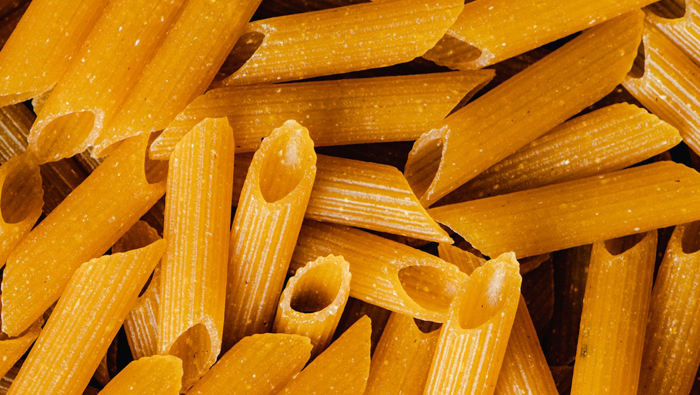
Find out more

Read the article

Find out more

Read the article

Find out more
Recently, gluten-free products have been in vogue and a gluten-free diet is often used to improve a person’s well-being and reduce his or her body weight. It should be explained that a gluten-free diet is classified as an elimination diet and recommended for people diagnosed with coeliac disease, gluten allergy, gluten intolerance and Dudring's disease (a skin variant of visceral disease).
Gluten is a complex of proteins, gliadin and glutein, which when added to water form a cohesive colloid, linked by disulphide bonds. Gluten can be easily extracted from dough by leaching out starch and other water-soluble components. Raw gluten is characterized by high cohesiveness, elasticity and extensibility, and contains lipids or minerals in addition to proteins. It has a high hydration capacity and is responsible for forming and maintaining the structure of dough. The quality of gluten depends on the type of grain, the dough kneading process and the ingredients added to the dough.
The basic gluten protein goes by different names depending on the type of grain: gliadin is found in wheat, secalin in rye and hordein in barley. The avenin contained in oats does not trigger an immune response. However, due to the extensive contamination of oats with other grains (at the stage of sowing, harvesting, transport, etc.) it is recommended to eliminate it from the diet of people with coeliac disease. Conditionally, certified gluten-free oats produced without contact with gluten cereals originating from Finland can be consumed. Contrary to emerging beliefs, older cereal varieties did not have a different protein content, as starch content and yield were much more important.
Products which are naturally gluten-free include: corn, rice, potatoes, soy, millet, buckwheat, tapioca, amaranth, cassava, lentils, beans, sorghum, nuts, meat, vegetables and fruit. Processed products are also considered gluten-free when their gluten content is no more than 20 mg/ kg of product.

It needs to be remembered that gluten proteins can be found not only in grains (wheat, rye, barley, spelt, einkorn wheat, emmer wheat and triticale) but also in products made from them, such as groats, flakes, flour, pasta and bread, because no technological process can eliminate the gluten effect. Safe gluten-free products are the ones marked with the licensed crossed grain logo. This sign guarantees that they are regularly tested and their producers are audited by the Polish Celiac Society. If a product does not have the crossed grain logo but is marked with a graphic symbol or described as gluten-free, it should also be considered safe. You should not, however, buy products with the following information on the label: ‘may contain traces of gluten’ or ‘gluten is used in the facility’. It is highly recommended to buy unprocessed products without artificial additives or preservatives.
In addition, it is necessary to carefully read the label with the description of the product ingredients because additives used in the production process of apparently gluten-free food can contain gluten. Such products may include: sausages, canned goods, pre-packaged minced meat, yoghurt, dairy drinks, mayonnaise, margarine, cornflakes, jelly candy, jelly beans, chewing gum, dried fruit, kissel, pudding, 2-in-1 coffee drinks, spice mixes, bouillon cubes, instant soups, sprinkles or cake decorations.
It is important to remember that gluten is not only used in the baking industry. Thanks to its properties (elasticity, flexibility, stickiness and toughness) it is used as a thickener, flavour or aroma carrier in food, pharmaceutical and cosmetics industries. For patients on a gluten-free diet, it is forbidden to consume the traditional communion wafer, as it contains about 25 mg of gluten. Such people can receive special gluten-free communion wafers. The Association of European Coeliac Societies has issued a statement that all medicines (no information on dietary supplements) available within the EU are safe for people with coeliac disease. An exception applies to patients with a particular gluten sensitivity.
The elimination of many cereal products means that a gluten-free diet is characterised by the lower proportion of fibre, B vitamins and minerals (Mg, Fe, Zn, Cu, Se) as compared with a traditional diet. For this reason, people who need to follow the gluten-free diet are advised to consult a dietitian in order to compose a wholesome, balanced menu taking into account the constantly expanding range of new gluten-free products available on the market.
People following a gluten-free diet because of medical indications must strictly adhere to its guidelines. However, the implementation of this diet for other reasons (current dietary trend among healthy people) has no medical justification. Eliminating only bread, pasta, groats and cereals from the menu does not mean that you follow a gluten-free diet, because the menu often includes products containing gluten. Scientific observations prove that the application (by persons not suffering from coeliac disease) of a diet devoid of whole grain products poses the risk of cardiovascular diseases and type II diabetes.
Agata Skop-Lewandowska, PhD has been working as a teacher and researcher at the Department of Hygiene and Dietetics of the Jagiellonian University Medical College for 15 years. Her research interests include nutrition of healthy people and patients with a particular emphasis on the nutrition of the older population.
I like
people liked this article